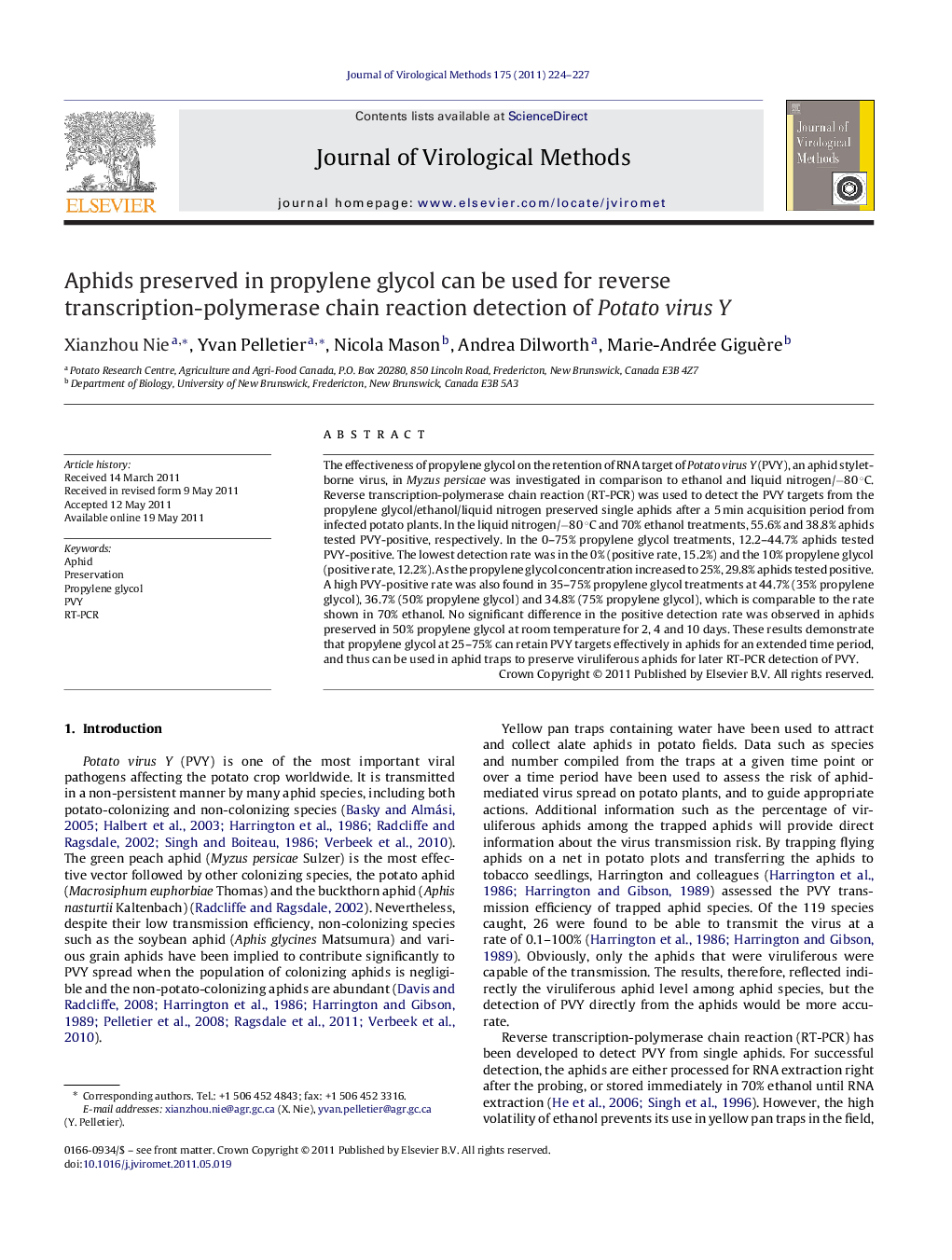| Article ID | Journal | Published Year | Pages | File Type |
|---|---|---|---|---|
| 3406850 | Journal of Virological Methods | 2011 | 4 Pages |
The effectiveness of propylene glycol on the retention of RNA target of Potato virus Y (PVY), an aphid stylet-borne virus, in Myzus persicae was investigated in comparison to ethanol and liquid nitrogen/−80 °C. Reverse transcription-polymerase chain reaction (RT-PCR) was used to detect the PVY targets from the propylene glycol/ethanol/liquid nitrogen preserved single aphids after a 5 min acquisition period from infected potato plants. In the liquid nitrogen/−80 °C and 70% ethanol treatments, 55.6% and 38.8% aphids tested PVY-positive, respectively. In the 0–75% propylene glycol treatments, 12.2–44.7% aphids tested PVY-positive. The lowest detection rate was in the 0% (positive rate, 15.2%) and the 10% propylene glycol (positive rate, 12.2%). As the propylene glycol concentration increased to 25%, 29.8% aphids tested positive. A high PVY-positive rate was also found in 35–75% propylene glycol treatments at 44.7% (35% propylene glycol), 36.7% (50% propylene glycol) and 34.8% (75% propylene glycol), which is comparable to the rate shown in 70% ethanol. No significant difference in the positive detection rate was observed in aphids preserved in 50% propylene glycol at room temperature for 2, 4 and 10 days. These results demonstrate that propylene glycol at 25–75% can retain PVY targets effectively in aphids for an extended time period, and thus can be used in aphid traps to preserve viruliferous aphids for later RT-PCR detection of PVY.
► Propylene glycol as a preservative to preserve PVY viruliferous aphids. ► PVY can be detected in aphids stored in propylene glycol at room temperature. ► The most effective concentration of propylene glycol for retaining PVY targets in aphids is 25–75%.
